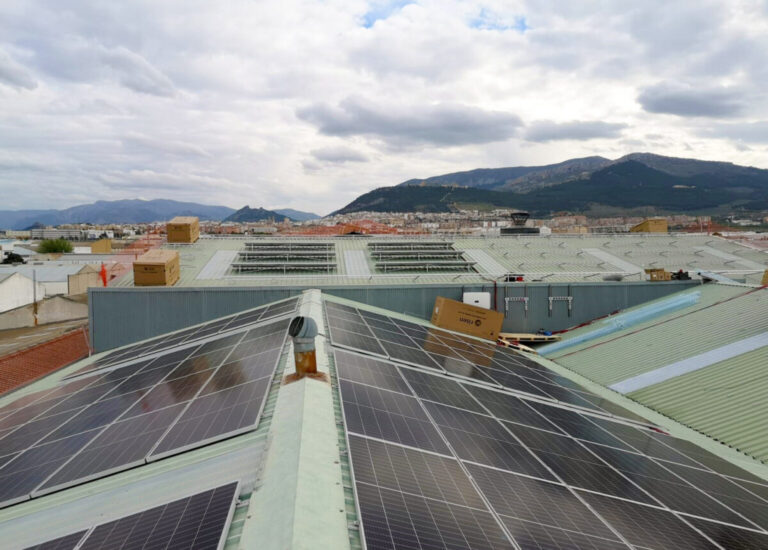Researchers in Switzerland investigated different setups to maximize energy yield per surface area for PV systems on flat roofs. Their work showed that using horizontal tracking and single-axis reflectors could deliver up to 5% better performance.
A group of scientists led by the Zurich University of Applied Science (ZHAW) in Switzerland performed simulations and measurements with the aim of maximizing energy yield in east-west oriented PV arrays installed on flat roofs.
One of the experimental setups involved horizontal single-axis tracking (HSAT) with PV panels arranged in an east-west orientation with an atypically high area utilization – a ground coverage ratio (GCR) of more than 90%. The HSAT angles were set to -5°, 0°, and 5°.
The researchers noted that the setup differs from HSAT systems that are typically installed in ground-mounted projects and have much lower GCRs to suppress self-shadowing from adjacent module rows. “In our research, the goal is to maximize the energy yield per surface area on a flat roof and not the specific energy yield. For this reason, low GCRs are not a sensible option,” the researchers said.
The reference PV system was a rotating bifacial rooftop module system with tilt angles of 10° and also oriented in an east-west direction with a GCR of 0.9. The power measurements were performed as a function of the tilt angles.
The simulations were performed in PVSyst 7.4, combined with physical measurements, including a special measurement setup with a miniaturized test rig available from Germany-based Solarc Innovative Solarprodukte GmbH.
“Surprisingly, it has been shown that horizontal tracking within only a small angular range, in combination with a high area utilization rate, can lead to additional yields of around 5%,” said Hartmut Nussbaumer, head of ZHAW’s photovoltaics research group. pv magazine.
The simulations and measurements showed that the proposed HSAT setup can achieve a 5% higher energy production compared to the reference system. Furthermore, the group said the approach could ultimately rely on very simple trackers that could be manufactured at low cost. For example, it said that all rows of modules on a roof could be moved with just one drive, and noted that future research could involve installing an HSAT system on a roof for outdoor testing.
Another experimental setup involved reflectors installed almost vertically at the edge of the photovoltaic system. In the past, motor-driven reflectors were retracted or extended depending on irradiation and weather conditions.
Initial results showed that the use of reflectors enabled an area-specific yield increase of 30% on the measured days. The energy yield in the morning or evening was “significantly” improved. The researchers also noted that additional reflectors, dynamic or static, could improve irradiation on the collector field and therefore increase energy yield.
“The main challenges in the research were to simulate and measure relatively small yield increases, which in combination ultimately have a major impact on the profitability of system adjustments,” says Nussbaumer.
The researchers noted that both HSAT systems and flat roof reflectors are effective and said the likelihood of the variants becoming more widely used “depends on cost-effectiveness.”
In the future, the researchers will investigate time-dependent controllable reflectors to improve energy yield with temporary adjustments based on specific energy demand or time-varying electricity prices, in addition to cost studies of both the initial investment and maintenance costs of the system.
Their findings are available in the study “Highest energy yields per surface area for PV systems on flat roofs”, published in Proceedings of the 2024 European Solar Photovoltaic Conference and Exhibition.
This content is copyrighted and may not be reused. If you would like to collaborate with us and reuse some of our content, please contact: editors@pv-magazine.com.


